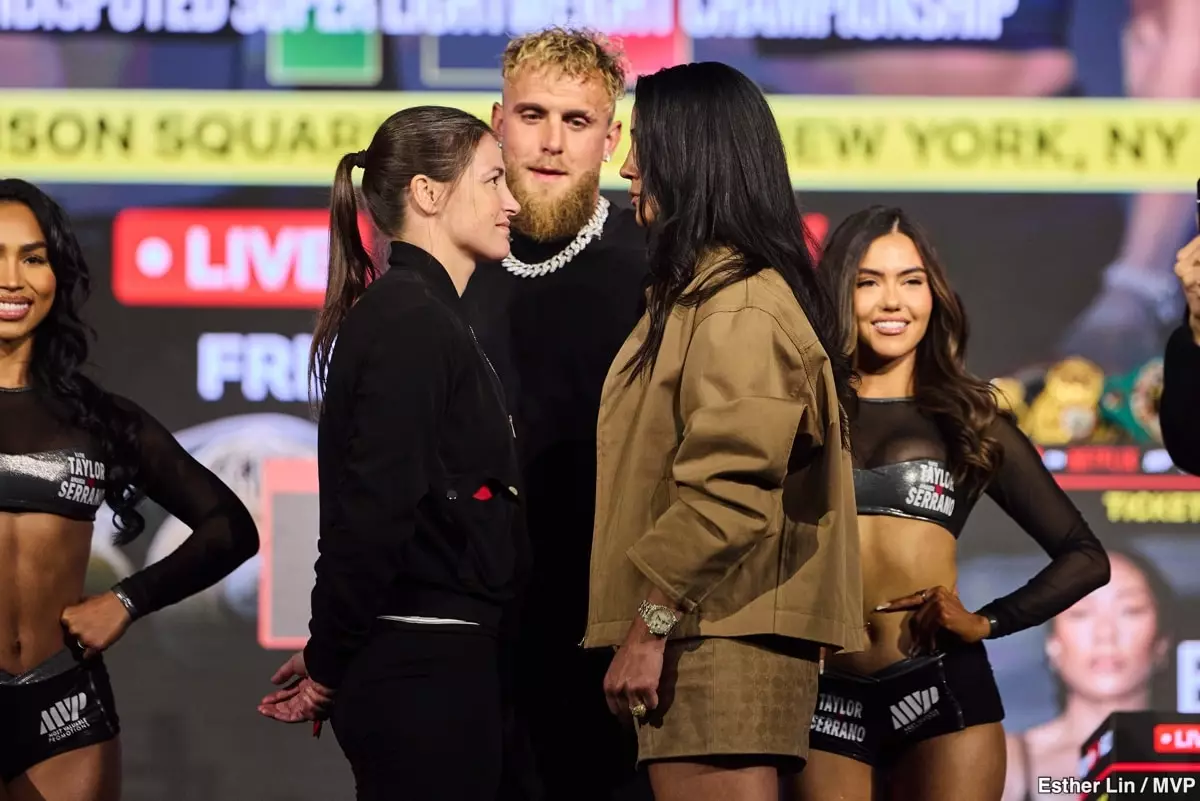In the modern landscape of women’s boxing, few matchups have captivated audiences quite like Katie Taylor versus Amanda Serrano. Their first encounter was nothing short of spectacular, quickly ascending into the status of a contemporary classic. Yet, as fans and analysts reflect on their second battle, many argue that it eclipsed the inaugural bout in intensity and drama. Now, with their third—and potentially final—match on the horizon, anticipation is at fever pitch for what could be a defining moment not just in their careers but in the sport itself.
What sets this rivalry apart is not merely the close scores or the cinematic exchanges of punches, but the palpable chemistry between two fighters who seem almost inseparable in their narrative. While Taylor has held the official upper hand with two wins, Serrano’s fierce insistence that she was unjustly deprived fuels the rivalry’s drama. This tension, while a staple in boxing, feels authentic here, underscored by Serrano’s candid acknowledgment of the physical toll—particularly the painful headbutts—that marred their second encounter.
More Than a Fight: A Partnership in the Spotlight
Beyond the gloves and rounds, Taylor and Serrano share a unique, somewhat paradoxical dynamic. Serrano’s assertion that they “make magic” together highlights a symbiotic relationship fueled by mutual respect and a shared drive. Their rivalry transcends bitterness; instead, it manifests as a platform that elevates women’s boxing to unprecedented visibility and commercial success. It’s telling that Serrano refers to Taylor as her “bestie,” framing their battles as joint ventures that have propelled both to financial heights uncommon in the sport’s female segment.
This cooperative spirit extends into the cultural realm as well, with a Netflix documentary shining a spotlight on their journey and battles. The attention from a global streaming service not only validates their significance but also heralds a new era where female boxing stars receive mainstream recognition, better compensation, and wider fan engagement.
The Combatants: Styles, Stakes, and Expectations
Katie Taylor, with a professional record of 24-1 and only six knockouts, contrasts with Serrano’s aggressive style and a much higher knockout ratio of 31 in 47 wins. This stylistic clash—Taylor’s technical finesse against Serrano’s raw power—has been a foundation for their riveting contests. While knockout power doesn’t dominate their rivalry, it is the relentless pace, resilience, and strategic adjustments round after round that keep fans at the edge of their seats.
Age, often a complicating factor in combat sports, plays a subtle but intriguing role. Serrano, though younger by two years at 36, compels observers to question whether this slight age difference might influence the trilogy’s outcome. Yet, what remains far more relevant is their shared will to push boundaries, redefine gender expectations in boxing, and engage audiences as equals in a male-dominated sport.
Anticipating the Trilogy: A Fight Beyond Sport
The upcoming July 11 fight in New York is poised not only as a potential Fight of the Year but as a cultural milestone. With both women having tasted success and controversy, their third fight promises the kind of narrative complexity that elevates boxing from a mere physical contest to a riveting drama steeped in personal pride, legacy, and mutual respect.
Critically, this rivalry challenges conventional boundaries of women’s sports promotion. Unlike many female athletes relegated to sidelines or novelty status, Taylor and Serrano have built a fierce competitive spirit that commands attention on its own merits. Their trilogy serves as an emblem of progress—showcasing the power of parity, respect, and a shared vision to elevate an entire sporting community.
Whatever the outcome, the Taylor-Serrano showdown is emblematic of how women’s boxing—not just as a sport but as storytelling—can capture the imagination and demand the spotlight it richly deserves.

